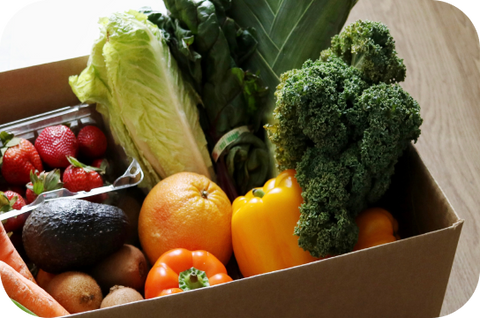

58% of all food produced in Canada—35.5 million tonnes—is lost or wasted every year (1). Food in landfills produce greenhouse gases over time, translating to 56.5 million tonnes of carbon dioxide equivalent emissions annually (1).
A sustainable food system is one that considers the economic, social, and environmental implications for future generations, in addition to the food supply chain sectors, sub-systems, stakeholders, and external contexts (2). Food loss and waste occur directly and indirectly in every component of the food system—be it agricultural operations, food safety regulations, sociocultural norms, consumer preferences, and more. The consequences are long-term, such as the exacerbation of the climate crisis via excess greenhouse gas emissions and overuse of natural resources, and immediate, like food inflation.
Light at the End of the Tunnel
32% of the food lost or wasted is edible (1). For example, approximately 13% of crops grown in Canada are unharvested or discarded after harvest due to rigid cosmetic standards, overproduction to guarantee contractual obligations, and seasonal fluctuations (3). Similarly, 12% of all food loss and waste occur in retail due to cosmetic rejections, spoilage from improper temperature and humidity control, and lack of storage (1, 4).
The preferred solution to address food loss and waste is reduction, calling out necessary changes to agri-food operations and practices (3). On a large commercial and governmental scale, edible, second-grade food could be redistributed to consumers (1). It is important to keep in mind the complexity and interconnections in the food system, such that a component cannot be changed without impacting other components. Tackling systemic food challenges are difficult, requiring coordination at local, national, and global levels.
There is no single solution that will solve the food loss and waste problem, but our individual actions have cumulative impacts. By reading this and educating yourself, you’re already becoming a more food literate and responsible consumer!
3 Simple Hacks, Incredible Reductions in Food Waste
- Save your used coffee grounds for plants. Spread coffee grounds over the topsoil of plants that thrive in acidic soil, such as roses, tomatoes, and peppers. Your plants will thank you!
- Buy the single bananas at markets. Many shoppers will pluck off individual bananas from the bunch, creating a pile of single bananas that are less likely to be bought and get thrown away. Pick those bananas instead—let’s lower the stats of most wasted food in the world together.
- Fruit bowls gone wrong. Not all fruits should be stored together. Fruits that release ethylene gas as they ripen, such as bananas, apples, and kiwis, will cause other fruits to ripen at a rapid pace and spoil. Taking some time to learn about fruit storage could significantly cut food waste!
Think Again: Thrifty Recipes with Food Scraps
- Don’t throw away the green tops of carrots! Make pesto with it.
- Got citrus peels? Try an orange simple syrup for cold drinks and cocktails.
- Save potato peels for a crouton replacement. Don’t miss baked potato skins!
- Bought more vegetables than you need? Pickle them!
- Watermelon rinds are edible! Cook up a storm: watermelon rind curry.
- Overripe bananas? Add them in protein oat pancakes!
(1) Nikkel, L., Maguire, M., Gooch, M., Bucknell, D., LaPlain, D., Dent, B., Whitehead, P., & Felfel, A. (2019). The avoidable crisis of food waste: Roadmap. Second Harvest and Value Chain Management International. https://vcm-international.com/food-waste/food-waste-publications/
(2) Food and Agriculture Organization of the United Nations. (2018). Sustainable food systems: Concept and framework. https://www.fao.org/3/ca2079en/CA2079EN.pdf
(3) Government of Canada. (2019). Taking stock: Reducing food loss and waste in Canada. https://www.canada.ca/en/environment-climate-change/services/managing-reducing-waste/food-loss-waste/taking-stock.html
(4) Boston Consulting Group. (2022). Closing the food waste gap. https://www.bcg.com/featured-insights/closing-the-gap/food-waste
